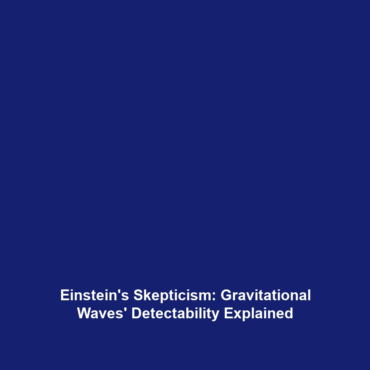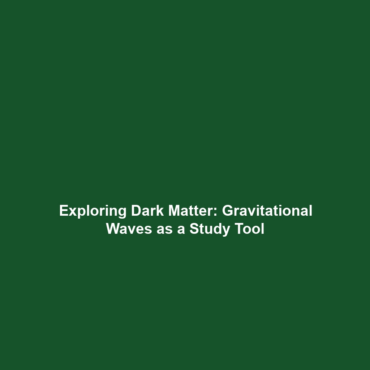Historical Context: Why Einstein Doubted the Detectability of Gravitational Waves
Introduction
The exploration of gravitational waves has evolved dramatically since Albert Einstein first proposed their existence in 1916. Despite his groundbreaking work in the theory of general relativity, Einstein harbored a skepticism regarding the detectability of gravitational waves. Understanding the historical context behind this doubt not only sheds light on Einstein’s thought process but also emphasizes the challenges that early 20th-century physicists faced. This investigation highlights the significance of early theoretical skepticism in the advancement of modern astrophysics.
Key Concepts
Einstein’s Theory of General Relativity
Einstein’s general relativity predicted that massive objects warp spacetime, creating ripples known as gravitational waves. Although he initially supported this theory, his belief in the waves’ detectability soon waned, prompted by:
- Weak Signal Strength: Einstein doubted whether the distortion caused by gravitational waves would be strong enough to measure.
- Technological Limitations: During Einstein’s time, the technology required to detect such faint signals did not exist.
- Importance of Experimental Evidence: Einstein believed that without concrete evidence, theories could not be trusted.
Applications and Real-World Uses
Despite Einstein’s skepticism, the pursuit of detecting gravitational waves has yielded significant advancements:
- Laser Interferometry: Facilities like LIGO (Laser Interferometer Gravitational-Wave Observatory) utilized Einstein’s theories to develop technology capable of detecting gravitational waves, confirming their existence.
- Astrophysical Discoveries: The ability to detect gravitational waves has opened new avenues in astrophysics, allowing scientists to study phenomena such as black hole mergers.
These applications are prime examples of how foundational theories in physics can evolve into revolutionary technologies.
Current Challenges
Despite the successes in detecting gravitational waves, challenges remain:
- Noise Interference: Environmental factors can interfere with measurements, complicating detection efforts.
- Data Overload: The volume of data generated by observatories poses challenges in processing and analysis.
- Technological Upgrades: Ongoing improvements in technology are necessary to enhance sensitivity and detection rates.
Future Research and Innovations
Future research in gravitational wave astronomy aims to address these challenges and expand its impact:
- Advanced Interferometers: New projects like the European Space Agency’s LISA (Laser Interferometer Space Antenna) aim to provide even greater sensitivity.
- Cross-Disciplinary Studies: Research integrating gravitational wave data with electromagnetic observations promises deeper insights into cosmic events.
Conclusion
Understanding the historical context of Einstein’s skepticism about the detectability of gravitational waves enriches our comprehension of contemporary astrophysics. As researchers continue to refine technologies and methodologies, the legacy of Einstein’s doubts serves as a reminder of the importance of rigorous scientific inquiry. To explore more on this topic, consider reading about LIGO’s discoveries and future gravitational wave projects.

